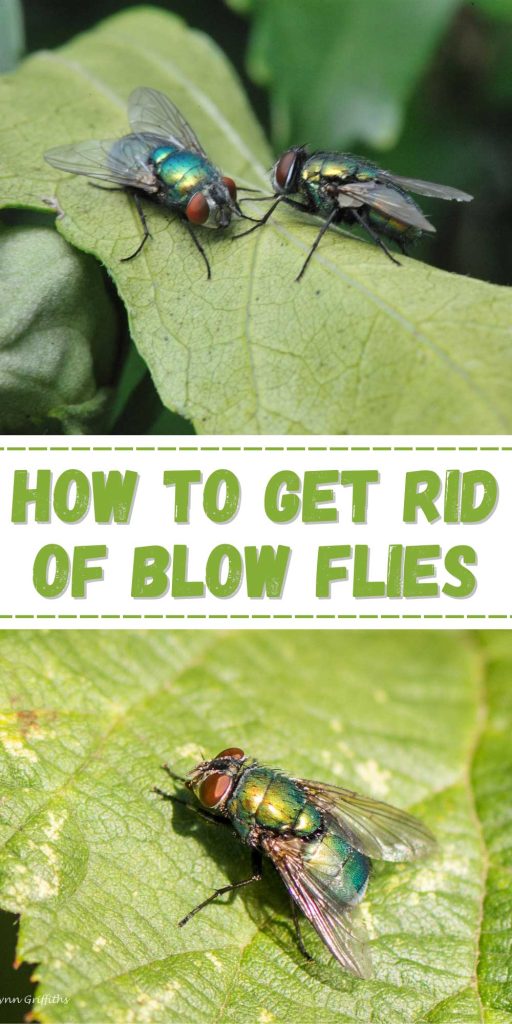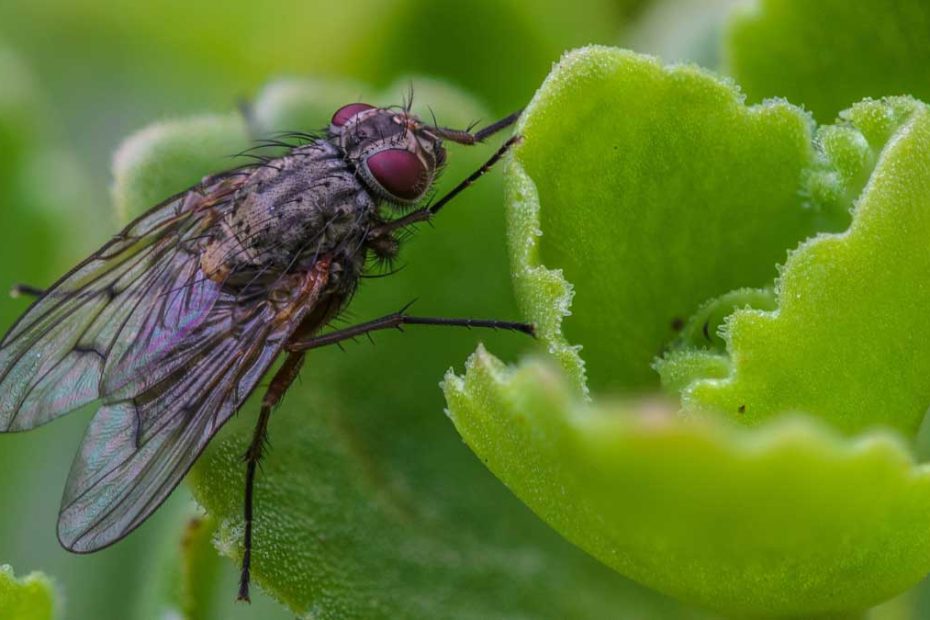Blow flies invading your space can be more than just a nuisance; they can pose serious health risks. These metallic-colored pests are often attracted to decaying organic matter, making your home or yard a prime target if proper sanitation isn’t maintained. Understanding how to effectively eliminate blow flies is crucial for maintaining a healthy living environment.
In this guide, you’ll discover practical and effective methods to get rid of blow flies once and for all. From identifying their breeding grounds to implementing preventive measures, you’ll learn everything you need to know to keep these unwelcome guests at bay. Ready to reclaim your space? Let’s immerse.
Key Takeaways
- Understand Blow Fly Behavior: Knowing the characteristics, behavior, and life cycle of blow flies helps in recognizing and addressing infestations effectively.
- Identify Infestations Early: Look for visual signs like adult flies, maggots, unpleasant odors, and egg clusters in common breeding areas.
- Prevent Blow Flies Invasion: Implement sanitation practices, manage waste properly, and seal entry points to reduce the risk of blow fly infestations.
- Use Effective Elimination Methods: Combine chemical solutions, natural remedies, and traps to control and eliminate blow fly populations from your living spaces.
- Consider Professional Help: For severe or recurrent infestations, or to save time, hiring professional pest control services can provide comprehensive and effective solutions.

Understanding Blow Flies
Blow flies are a common pest, especially in warmer months. Known for their metallic green or blue bodies, these flies can be found around decaying organic matter. This section sheds light on their characteristics, behavior, and life cycle to help you understand them better.
Key Terms
Blow Flies: Insects of the Calliphoridae family, recognized by their shiny, metallic appearance.
Decaying Organic Matter: Decomposing animal carcasses, rotting food, and other biodegrading materials that attract blow flies.
Life Cycle: The stages of development from egg to adult blow fly. This includes egg, larva (maggot), pupa, and adult.
Characteristics of Blow Flies
Blow flies are medium to large flies, ranging from 6 to 14 mm in length. They’re often metallic and vivid, making them easy to identify. They possess a rapid development cycle, with eggs hatching within 24 hours and maggots maturing quickly.
Behavioral Patterns
- Attracted to Decay: Blow flies primarily seek out decaying organic material for food and reproduction.
- Reproductive Habits: Female blow flies lay between 100 to 200 eggs at a time, usually on decomposing matter.
- Lifecycle Completion: The entire lifecycle from egg to adult can complete in as little as two weeks under optimal conditions.
Identifying Their Presence
- Visual Identification: Shiny, metallic flies often hovering around garbage or carcasses.
- Larvae Detection: Presence of maggots in rubbish bins, compost piles, or dead animals.
- Odor Recognition: Strong, pungent odors around breeding sites often signal the presence of blow flies.
Summary
Understanding blow flies’ characteristics, behavior, and life cycle helps you recognize and control infestations more effectively. Recognize their traits and behavioral patterns to take proactive measures against them.
Identifying Blow Fly Infestations
Spotting a blow fly infestation early can help prevent larger problems. Look for specific signs to accurately identify the presence of blow flies in your home or yard.
Common Signs
Monitor the following indicators to detect a blow fly infestation:
Adult Flies:
Medium to large, metallic green or blue flies often found near windows, light sources, or decaying matter.
Maggots:
Whitish larvae measuring around 9-22mm, found in or near decaying organic material.
Unpleasant Odors:
Strong, foul smells indicating decomposing organic matter, a primary attraction for blow flies.
Egg Clusters:
Tiny, white, rice-like clusters often laid in decaying meat, garbage, or animal carcasses.
Areas to Check
Examine these areas thoroughly to locate potential blow fly breeding sites:
Garbage Bins:
Check both indoor and outdoor trash bins, focusing on decomposing food waste.
Animal Droppings:
Look for fly activity around pet waste in yards or litter boxes.
Compost Piles:
Inspect compost heaps for larvae and adult flies.
Dead Animals:
Search for carcasses of rodents or birds that may be hidden in attics, basements, or outdoor sheds.
High-Moisture Areas:
Investigate damp locations like drains, sewer lines, and leaking pipes.
Taking these proactive steps helps in early detection and control of blow fly infestations.
Preventing Blow Flies
Effective prevention methods are essential to keep blow flies from invading your living spaces. By addressing key factors, you can create an environment that’s less attractive to these pests.
Waste Management
Managing waste properly is crucial for preventing blow flies, who are attracted to decaying organic matter.
- Secure Trash Bins: Use lids on garbage bins to prevent flies from accessing the waste.
- Regular Disposal: Empty trash bins frequently, especially those containing food waste.
- Sealed Bags: Place garbage in sealed plastic bags before disposing of it in bins to minimize odors.
Proper Sanitation
Maintaining cleanliness throughout your home and yard reduces the chances of attracting blow flies.
- Clean Surfaces: Regularly clean kitchen countertops, sinks, and other areas where food is prepared or consumed.
- Pet Waste: Promptly remove pet waste from yards and dispose of it in sealed bags.
- Compost Maintenance: Manage compost piles by regularly turning them and covering them with soil or compost material.
Sealing Entry Points
Closing off potential entry points helps keep blow flies from getting inside your home.
- Inspect Seals: Check and repair broken seals around doors and windows.
- Install Screens: Use screens on windows and vents to prevent flies from entering.
- Cracks and Gaps: Seal cracks and gaps in walls, floors, and foundations to block entry paths.
Taking these preventive measures reduces the likelihood of blow fly infestations. Keep your environment clean, manage waste effectively, and ensure entry points are sealed to maintain a fly-free zone.
Effective Methods to Eliminate Blow Flies
Blow flies pose health risks and create nuisance due to their attraction to decaying organic matter. Eliminating blow flies efficiently involves a multi-faceted approach, including chemical solutions, natural remedies, and traps.
Chemical Solutions
Chemical solutions offer a rapid approach to controlling blow fly populations. Ensure safe usage by following the product’s instructions:
- Insecticidal Sprays: Ideal for immediate results. Spray in areas infested by adult blow flies.
- Larvicidal Agents: Apply directly to breeding sites like garbage bins or compost piles to target larvae.
- Residual Sprays: Coat surfaces frequently visited by flies, such as walls and waste bins, with these long-lasting insecticides.
Natural Remedies
Natural remedies provide a safer, eco-friendly alternative. These methods are effective without introducing harmful chemicals:
- Essential Oils: Eucalyptus, lavender, and peppermint oils repel blow flies. Use diffusers or mix with water for a spray.
- Diatomaceous Earth: This natural powder dehydrates and kills blow fly larvae when sprinkled on breeding sites.
- Clove-Studded Lemons: Stick cloves into halved lemons and place them around infested areas to deter flies.
Traps and Baiting Techniques
Traps and baiting techniques can be effective for capturing and eliminating blow flies. Set up in strategic locations to manage fly populations:
- Sticky Traps: These adhesive surfaces capture adult flies upon contact. Place them near windows or garbage bins.
- UV Light Traps: Ultraviolet light attracts blow flies, which are then electrocuted upon contact with an internal grid.
- Baited Jar Traps: Fill jars with a mixture of sugar and vinegar to lure flies. Once inside, the flies are trapped and drowned.
Combining these methods increases the effectiveness of blow fly management and ensures a healthier living environment.
Professional Pest Control Services
Professional pest control services offer expert solutions for persistent blow fly infestations that cannot be managed through DIY methods.
When to Call a Professional
Consider calling a professional if:
- Severity: The infestation is overwhelming, with large numbers of adult flies, maggots, and egg clusters.
- Health Risks: There’s concern about the potential health risks associated with blow flies, especially in environments where hygiene is critical.
- Recurrent Infestations: Previous attempts at extermination have failed, and the blow flies keep returning.
- Time and Convenience: There’s limited time to tackle the infestation, and professional intervention is more convenient.
What to Expect from Professional Services
Professional pest control services provide comprehensive and targeted blow fly management. Expect the following:
- Initial Inspection: A thorough inspection to identify blow fly breeding sites and entry points.
- Customized Treatment Plan: A tailored plan that may include chemical treatments, traps, and preventive measures based on the severity of the infestation.
- Chemical Treatments: The use of insecticidal sprays, larvicides, and residual treatments to eliminate blow flies and prevent recurrence.
- Non-Chemical Methods: Implementation of eco-friendly options like essential oils, if preferred, and advice on natural repellents.
- Regular Monitoring: Scheduled follow-ups to ensure the infestation is fully controlled and preventive measures are effective.
- Expert Advice: Recommendations on maintaining sanitation and preventing future infestations, such as proper waste management, sealing cracks, and improving ventilation.
Hiring professional pest control services ensures effective blow fly management through expertise, tailored strategies, and ongoing support, making it easier to maintain a clean and fly-free environment.
Conclusion
By understanding blow flies’ behavior and lifecycle, you can take proactive steps to keep them at bay. Implementing proper sanitation, waste management, and sealing entry points are crucial for prevention. If an infestation occurs, a combination of chemical solutions, natural remedies, and traps will help you manage it effectively. For severe cases, don’t hesitate to call professional pest control services to ensure thorough and lasting results. Taking these measures will help you maintain a clean, healthy, and fly-free environment.
Frequently Asked Questions
What are blow flies attracted to?
Blow flies are primarily attracted to decaying organic material, such as garbage, animal carcasses, and feces. They seek these substances for both food and reproduction.
How can I identify a blow fly infestation?
Look for adult flies, maggots, unpleasant odors, and egg clusters. Check common breeding sites like garbage bins, compost piles, animal droppings, and areas with high moisture.
What are effective ways to prevent blow flies?
Maintain proper waste management by securing trash bins and disposing of waste regularly. Ensure good sanitation, including cleaning surfaces and removing pet waste promptly. Seal entry points around doors, windows, and cracks in structures.
Can natural remedies be used to get rid of blow flies?
Yes, natural remedies such as essential oils, diatomaceous earth, and clove-studded lemons can be effective. Additionally, traps and baiting techniques like sticky traps and UV light traps can also help.
When should I call a professional for blow fly infestations?
Call a professional if you face overwhelming infestations, health risks, recurrent problems, or a lack of time for self-management. Professionals provide thorough inspections, customized treatment plans, and ongoing support.
How can blow flies be eliminated effectively?
A multi-faceted approach works best, including chemical solutions like insecticidal sprays, natural remedies, and traps. Using a combination of these methods enhances the overall effectiveness of blow fly management.
Are blow flies harmful to humans?
Yes, blow flies can pose health risks as they can transmit bacteria and pathogens by contaminating food and surfaces. Effective control is necessary to maintain a healthy living environment.
How long does it take for blow flies to complete their lifecycle?
Blow flies can complete their lifecycle from egg to adult in as little as two weeks under optimal conditions. During this period, they can reproduce rapidly if not controlled.
What are common areas to inspect for blow fly breeding grounds?
Inspect garbage bins, animal droppings, compost piles, dead animals, and areas with high moisture. These are common sites where blow flies breed and lay eggs.
What are the visual traits of blow flies?
Blow flies are medium to large insects with metallic green or blue bodies. Recognizing these traits can help in early identification and control of infestations.
